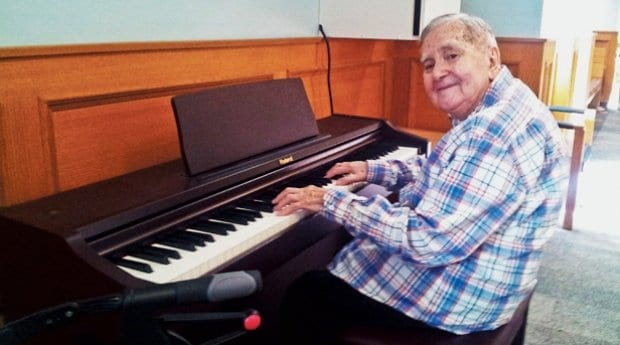“Celebrate diversity” and “positive space” stickers decorate the reception area at Toronto long-term-care facility True Davidson Acres. Carlos Herrera, the home’s administrator, has a Pride flag on his desk, while two water guns used in last year’s parade sit in the corner of his office. Although Pride is still weeks away, this facility acknowledges its residents’ diversity year-round as one of Toronto’s designated queer-friendly retirement homes.
The residents have participated in the parade since 2004, but WorldPride will include a set of events all seniors can look forward to. The Senior Pride Network is hosting its seventh annual conference on June 22 and 23. Called Opening the Closet on Aging: Wired to Connect, it will focus on intergenerational relations in the LGBT community.
Heather Bain, older LGBT community service coordinator at the 519 Community Centre, says that this year’s focus is to overcome ageism and establish a network between adult and youth community members. Bain says other Toronto retirement homes have failed to create supportive environments for their queer residents.
On the first day of the conference, the Sunshine Centres for Seniors is partnering with the Senior Pride Network to host the Rainbow Bridges Festival on Ward’s Island. Bain says it will bring together people of all ages for food and fun.
The residents at Fudger House, another queer-friendly, long-term-care facility located just outside the Village, at Sherbourne and Wellesley streets, are also excited about WorldPride festivities. June will be a busy month at the residence, with the annual rainbow-flag-raising ceremony and preparing a float for the parade.
“Being on the Pride bus is the only time you can shoot a police officer with a water pistol and get away with it,” says Alf Roberts, 84.
Roberts, who was a church organist in Toronto for more than 50 years, came out of the closet shortly after moving into Fudger House four years ago. Now, he is head of the home’s Molly Wood Social Club, a group dedicated to LGBT topics and activities. “Coming here really opened me up,” Roberts says. “When people asked me about being gay years back, I would say, ‘I am what I am,’ and now I say, ‘Yes, I’m gay.’”
Staff members at Fudger House set the standard for a queer-friendly environment in long-term care. Administrator Lorraine Siu says it upsets her when she hears that LGBT people are scared to move into long-term care because of the reputation it has for forcing queer people back into the closet.
In 2008, the City of Toronto developed a 146-page reference manual for creating LGBT-inclusive environments called Diversity Our Strength. Siu says that while all 10 City of Toronto long-term-care facilities received the training together, Fudger House saw a need to implement the toolkit’s messages because of the diversity of its population.
Designated LGBT-friendly homes work closely with representatives from The 519 and Sherbourne Health Centre. Bain, however, thinks the package in place for long-term-care facilities is insufficient. She says that only half the homes in Toronto have received updated training since 2008, and while Fudger House and True Davidson Acres have integrated it, she knows others have not. Further, with high rates of staff and volunteer turnover, it is difficult to maintain consistent levels of training.
Bain says serious issues exist for LGBT people in care facilities, such as staff members misgendering trans people and avoiding physical contact with HIV-positive residents. “Seniors shouldn’t have to hide their favourite photo or feel anxiety from having a partner come to visit.”

 Why you can trust Xtra
Why you can trust Xtra


